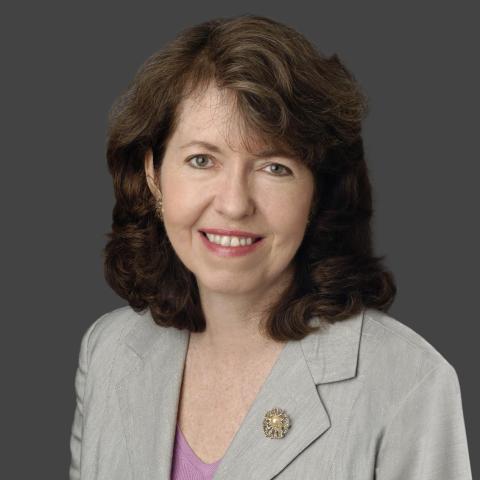We now know the approximate date when Federal Reserve Board chair Janet Yellen will feel comfortable ending the Fed's near-zero interest rate policy: never. Those who were led to believe by her first press conference that she has shed her dove's feathers for those of an inflation hawk, circling over the markets, poised to raise interest rates, got it wrong. She has her heart set on keeping rates low enough to eliminate "slack," borrowing a term often used by Mark Carney, governor of the Bank of England. And "slack" is a many-dimensioned concept when applied to labor markets.
As Yellen made clear early last week when she told an audience in Chicago, "While there has been steady progress, there is also no doubt that the economy and the job market are not back to normal health." It is doubtful whether Friday's job report, which revealed that the private sector had created 192,000 jobs in March, restoring private-sector employment to its pre-recession level, will provide the Fed chair with sufficient cheer to encourage her to allow interest rates to rise. The unemployment rate remains stuck at 6.7 percent, and 12.7 million workers are jobless, involuntarily working short hours, or too discouraged to continue the job hunt. Some experts are guessing that job creation will have to hit some 300,000-400,000 per month to persuade Yellen to tighten monetary policy.
Like all central bankers, Yellen professes to be data-driven, but with an important difference. Unlike many central bankers, she looks beyond the statistics to the human dimension of the labor market's woes. In Chicago she tried to humanize statistics by citing by name three "ordinary Americans" who had lost their high-paying full-time jobs, at least one of whom has had to settle for part-time, minimum-wage employment. "They are a reminder that there are real people behind the statistics." This is apparently part of a new effort to build a constituency in favor of Fed policy-beyond that which it gathers by keeping share prices high.
Set aside for the moment that two of Ms. Yellen's three "courageous and determined working people" have criminal records, one related to a recent conviction for possession of heroin, and therefore are hardly representative of the great mass of the unemployed. (Yellen spokespersons say the chair was aware of the records of her humanizing examples.) More important is what the Fed chair revealed to be her list of the labor-market problems that stimulative central bank policy must solve before tightening is to be considered. It includes, of course, the unemployment rate, but not only the headline measure, now standing at 6.7 percent, a number Yellen wants to see driven down to between 5 and 5.5 percent. Another is stagnant wages: her job will not be complete until average wages resume the rise that seems to have come to a halt many years ago. The Brookings Institution's William Galston points out that during the recession 60 percent of the job losses were in the middle-wage group, but only 20 percent of the jobs added since the recession ended pay that much.
Another Yellen goal is to reduce long-term unemployment. Before the recession the average duration of unemployment was about 16 weeks; it is now 37 weeks. "Long-term unemployment is devastating to workers and their families. The toll is simply terrible on the mental and physical health of workers," Yellen said long before assuming Ben Bernanke's seat at the Fed.
In addition to reducing the unemployment rate and the number of long-term unemployed workers, and raising middle-class wages, Yellen wants to lure millions of workers back into the labor force, reversing the decline in the labor force participation rate. Finally, she is concerned about the decline in quit rates. That drop, she reasons quite correctly, reflects workers' uncertainty that the next jobs await their applications, discouraging them from moving on to the growing industries of the future, industries that are experiencing job shortages.
So here is her agenda, one that she believes will require keeping rates low for a long, long while:
* Get the unemployment down to around 5 percent,
* Return the work force participation rate to its pre-recession level,
* Provide part-time workers with fuller work weeks,
* Drive up average wages,
* Increase worker confidence so as to drive up quit rates, a measure of labor mobility.
It is not certain that all of these goals are within Yellen's reach. Some of the long-term unemployed no longer have the educational level or the skills to enable them to return to high-paying jobs. Some of the jobs that existed when the recession hit have simply vanished, moved to lower-wage countries, been eliminated by new technologies or by cuts in government employment. Loss of Obamacare subsidies might deter workers from re-entering the labor market, and the tax increases embedded in that legislation might discourage hiring, resulting in the loss of millions of jobs according to the non-partisan Congressional Budget Office.
Underlying Yellen's intent to see so many aspects of the labor market set right are two assumptions. The first is that monetary policy can stimulate growth. The second is that faster growth will create more full-time, better-paying jobs to attract millions of workers back into the labor force.
She is smart enough to know that monetary policy alone can't accomplish all her goals. Which is why she wants the federal government to reverse its fiscal tightening and loosen the purse strings, a position that sets many Republicans' teeth on edge but persuades President Obama that he has made a wise choice for the job of Fed chair. Her main problem is that recent economic growth has far outstripped job creation, perhaps because employers worry that growth won't be sustained, perhaps because new technologies allow production to expand far more rapidly than the number of jobs, perhaps because of uncertainty concerning the effect of the Obamacare regulations (now stacked seven-feet high and growing) on labor costs. So growth alone is not the complete answer to job-market weakness.
Still, Yellen is determined to face down critics who argue that her policies are storing up trouble for the economy, in three ways. First, they are setting the stage for future inflation. Second, low returns on safe government bonds are forcing investors to search for higher yields by taking on increasingly risky investments. Finally, low interest rates are contributing to rising inequality by inflating house and share prices, making the rich even richer-see the spurt in sales of vacation homes while average workers' wages stagnate.
Only two things can force Yellen off course: a revolt by her Fed colleagues, or a decision by inflation-shy investors to drive interest rates up by selling bonds.


















